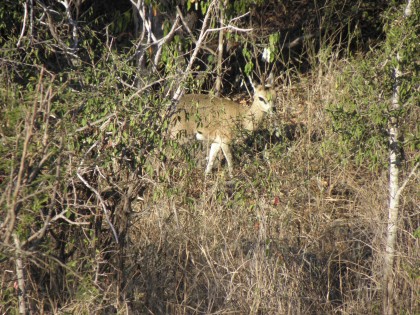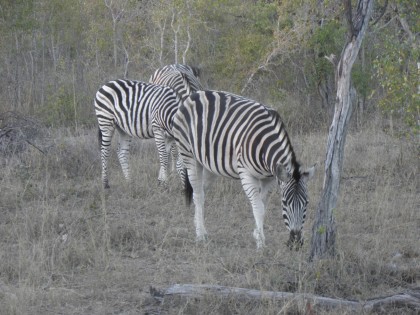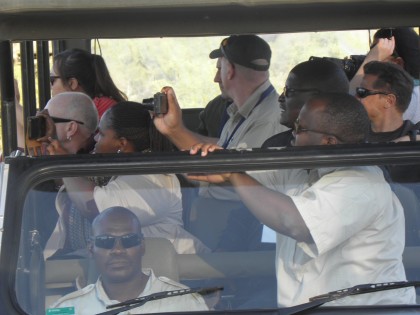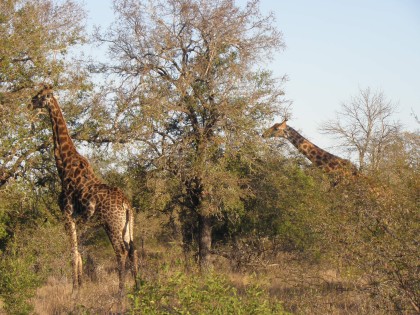BEST Education Network Think Tank XV: The Environment People Nexus in Sustainable Tourism: Finding the Balance
‘BEST’ = ‘Building Excellence in Sustainable Tourism’
http://www.besteducationnetwork.org
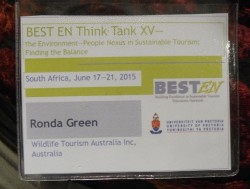 I’m representing Wildlife Tourism Australia at the 15th Think Tank
I’m representing Wildlife Tourism Australia at the 15th Think Tank
I was sorry to eave Kruger (details of my stay there are on the http://www.araucariaecotours.com blog), but we’re not that far away: it’ just across the river, and we’ll be having a sunset game drive there tonight.
I’ll be adding to this page during the conference
There is still wildlife to see right here at the Protea Hotel, and we can look across the river into Kruger.
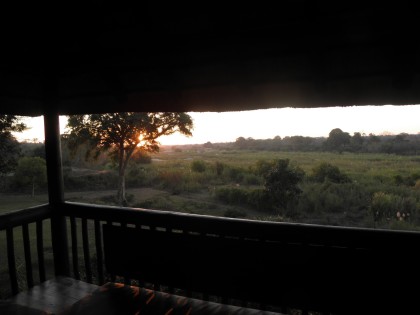
Looking towards KrugerNP from the Protea Hotel
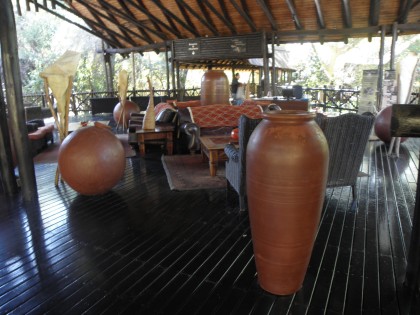
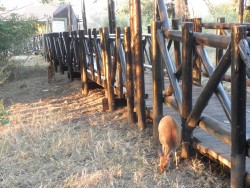
Bushbuck wander through the grounds
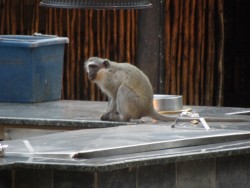
Monkeys and mongoose seek scraps from last night’s dinner
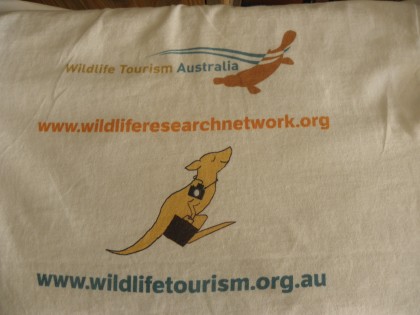
Since I’m representing Wildlife Tourism Australia, I wore my WTA t-shirt today
First plenary session:
Keynote speaker: Dr Jarkko Saarinen. Tourism, Communities and Sustainability: Balancing between Growth and Development
Some of the main points include:
Consultants and researchers often put too much emphasis on what they do instead of really getting to understand the communities and their needs
Some ask why should tourism be expected to contribute to communities any more than other businesses? The local community is often one of the local features used by the tour operator, and can be changed by their involvement with the tourism industry, some times In unexpected ways.
Botswana tourism policy: involving community:
- Goals: empowerment, participation , awareness etc. of local communities
- indicators used include numbers of jobs or businesses, increase in share of GDP, international visitor arrivals – but these indicators don’t necessarily indicate the major goals are being reached
In Namibia, Tourism brings benefits to local communities of semi-nomadic pastoralists in a very poor area, but also brings unexpected problems
Tours are highly organised, and tourists are encouraged to bring gifts in form of foodstuffs (maize, sugar, cooking oil) tat can be shared amongst the people, rather than money. In total this provides living for 1 – 4 weeks/year, which may not be much but is appreciated.
However, the pastoralists now tend to concentrate near roads and other tourism areas where they are most likely to receive such benefits, and as a result these areas become overcrowded and overgrazed, and cattle die in droughts, making them now more dependant on the tourism, so it becomes a vicious circle. Also, many parents now don’t allow some of their daughters to go to school or other education, because then they’ll want to adopt western habits and wear western clothes instead of looking and behaving the way tourists want them to.
Further problem include:
- the interpretation of the term ‘sustainable tourism‘,which to may operators and politicians can mean sustaining tourism, not sustaining local culture and environment
- most (not all) academic studies show tourists remain unconcerned about environmental impacts while traveling
- although many businesses have developed very good practices, only a few aim beyond their legal obligations
Hilda, of South Africa National Parks (one of the top level managers?) spoke on how to benefit communities and conservation
South African National Parks gives compensation for land loss, and opportunities for income within the parks (building infrastructure, running restaurants and picnics sites etc.)
Some of the challenges include lack of business and technical expertise, illiteracy, understanding of conservation issues.
Bursaries are provided for young people to train and return to their communities
Opportunities for people near the parks to make money from wildlife include::
- intensive and extensive breeding of rare or iconic spp
- hunting for trophy and biltong
- meat processing, tannery
- eco estates
A speaker from Sabi Sands then spoke of the Pfunanani Enterprise Development
The Sabi Sands Pfunanani Trust works in partnership with Sabi Sands Wildtuin, the University of Johannesburg and the Buffelshoek Trust, working with small villages close to Kruger NP.
Goals are to enhance small business capacity through training, and linking to lodge markets (e.g. employment at ecolodge or supplying products to them) and other local businesses in the area. They plan over the next two years to create 120 permanent and 240 temporary jobs
Eligibility for people seeking up small businesses to receive assistance are that they must be from one of the target villages, not associated with rhino poaching, and producing (or planning to produce) goods and services that respond to an existing market demand,
A good mix of business types are included, and technical training and mentoring are provided where needed, e.g. for IT cafes or tyre repair businesses
A 2-hour game drive in Kruger
Amazingly we saw all Big 5 and also giraffe , zebra, kudu and others in just 2 hours. The lion was too well hidden in the grass for a good photo
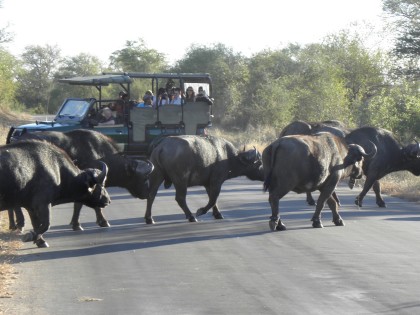
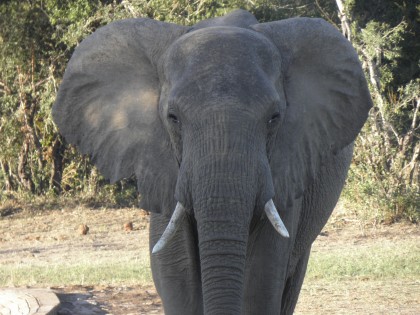
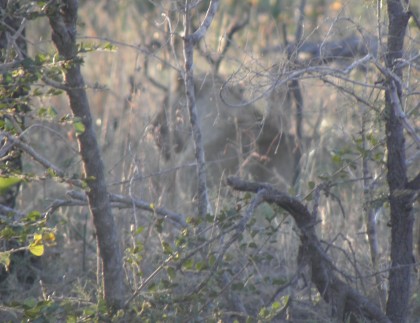
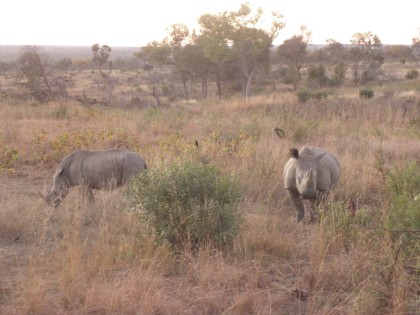
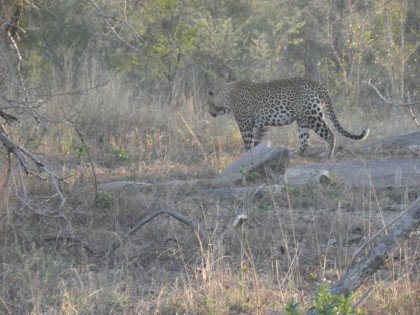
We cud hardly believe what we were seeing when this leopard came so close to our vehicle
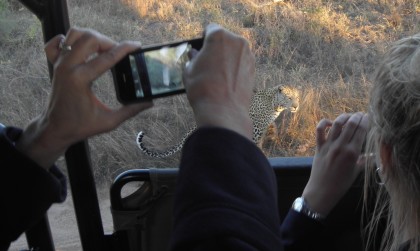
Apart from the Big 5, we saw giraffes, zebras, klipspringer, kudu, and as usual plenty of impalas, as well as hornbills, francolins and other birds.
